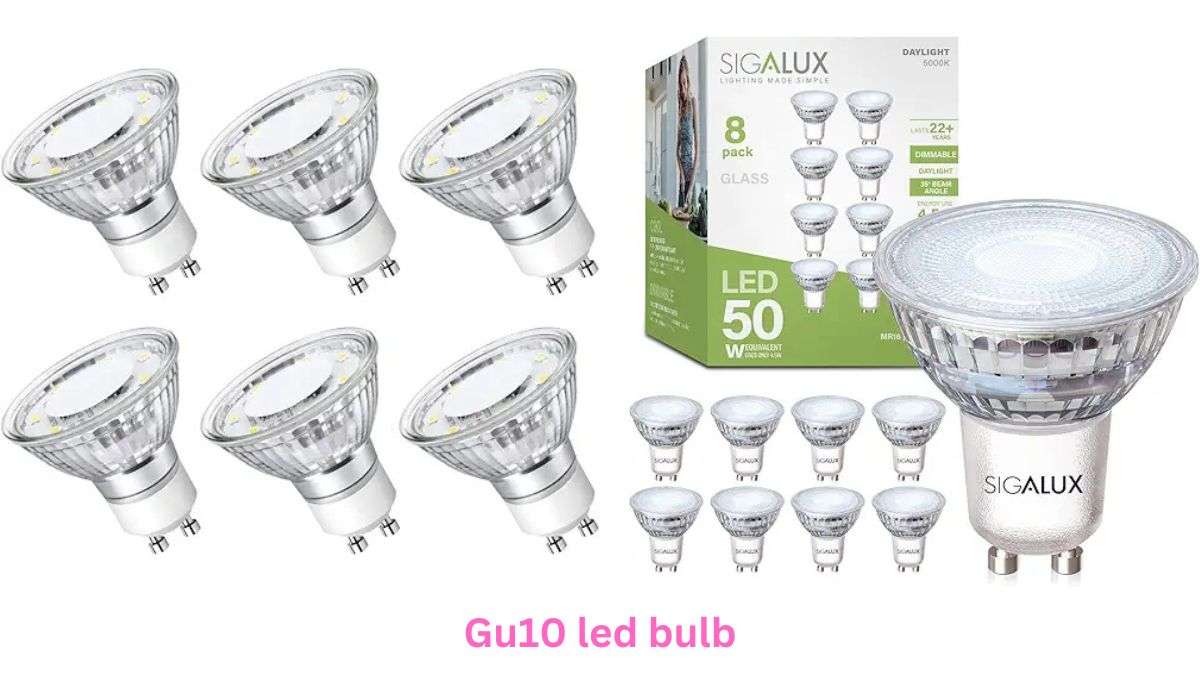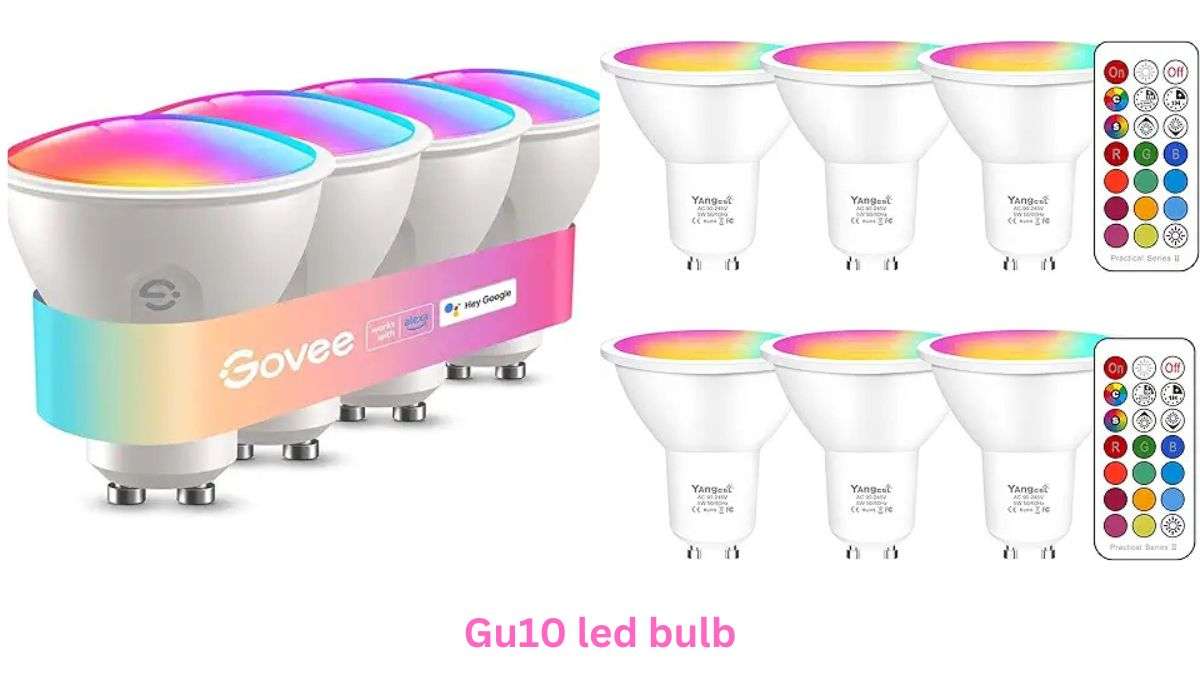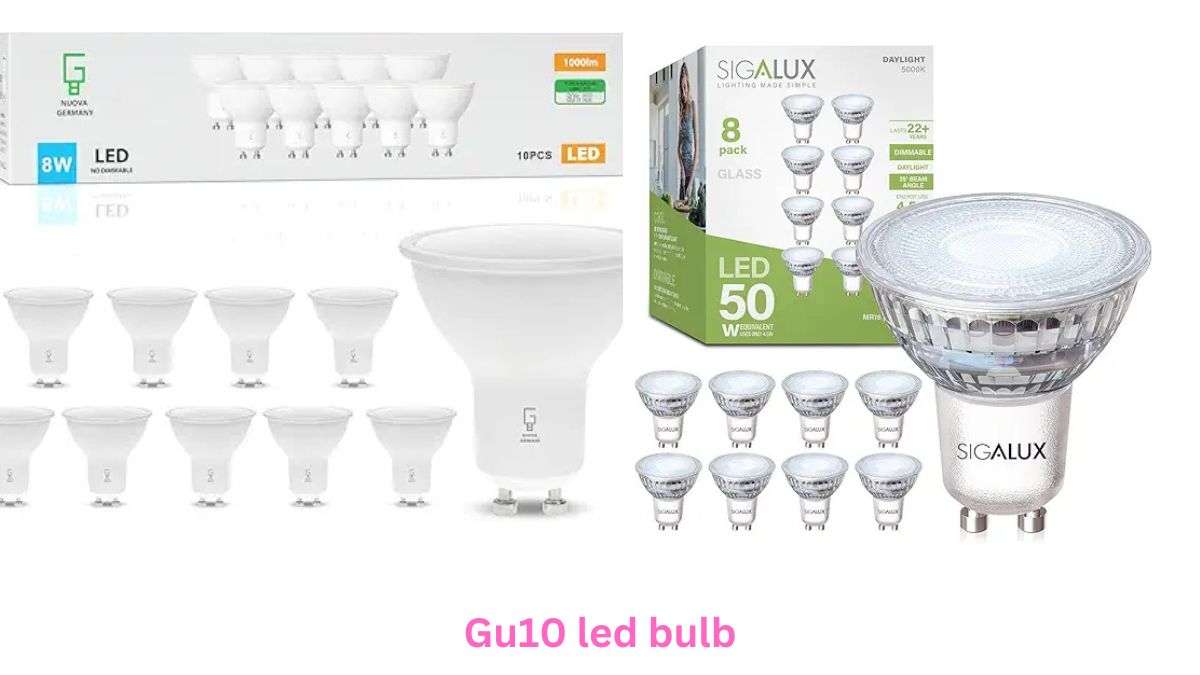Did you know that switching to GU10 LED bulbs can cut your lighting energy costs by up to 90%? I’ve been helping homeowners transition to energy-efficient lighting for years, and it’s incredible to see their reactions when their energy bills drop! While these spotlight-style bulbs might seem simple, choosing the right one can feel like a puzzle. I’m here to make it simple, so don’t worry. This guide will walk you through everything you need to know about GU10 LED bulbs, from understanding their unique features to installation tips and troubleshooting common issues.
What Are GU10 LED Bulbs and How Do They Work?
Definition and Components of GU10 LED Bulbs
GU10 LED bulbs are spotlight bulbs commonly used in track and recessed lighting. These bulbs are designed with an LED (light-emitting diode) that uses minimal energy to produce bright, focused light. Compared to traditional halogen or incandescent bulbs, GU10 LEDs are much more energy-efficient and have a significantly longer lifespan.
What Does ‘GU10’ Mean?
“GU10” is a reference to the bulb’s base type. This base has two pins spaced 10 millimeters apart, making it easy to plug the bulb into compatible fixtures. The GU10 fitting size ensures a secure fit for ceiling spotlight fixtures and recessed lighting.
How LEDs Differ from Halogen and Incandescent Bulbs
LED technology works by passing an electric current through a semiconductor, emitting light without the need for a filament, unlike halogen or incandescent bulbs. This efficient light production method means LEDs consume less power, emit less heat, and last longer.
Advantages of Choosing GU10 LEDs
- Energy Savings: LEDs can consume up to 90% less power than halogen bulbs.
- Longevity: With a lifespan of around 15,000 to 25,000 hours, GU10 LEDs outlast traditional bulbs by a large margin.
- Reduced Heat Output: LEDs don’t get as hot, making them safer and more suitable for enclosed fixtures.
Common Applications for GU10 LED Bulbs
These bulbs are popular for recessed lighting, track lighting, and accent lighting in kitchens, bathrooms, and living spaces. Whether you’re looking for directional lighting in a workspace or warm ambiance in a living room, GU10 LEDs are highly versatile.
Essential Features to Consider When Buying GU10 LEDs
1. Wattage and Power Consumption
GU10 LED bulbs come in different wattage options, typically ranging from 3W to 7W. These options consume far less energy than the 35W or 50W used by halogen equivalents, making them a smart choice for energy savings.
2. Brightness Levels (Lumens)
Look for lumens, the measure of brightness, rather than wattage when selecting LEDs. A GU10 LED with 300-400 lumens is perfect for ambient lighting, while 500+ lumens work well for task lighting areas.
3. Beam Angle
Beam angle determines the spread of light. For focused lighting, a narrow beam angle (e.g., 30 degrees) is ideal. For broader coverage, consider a wider beam angle of 60 degrees or more.
4. Color Temperature (Kelvin)
The color temperature affects the ambiance of your space. A warm white GU10 (around 2700K-3000K) is cozy and inviting, great for living spaces. A cool white GU10 (4000K-5000K) provides a crisp, bright light ideal for kitchens and bathrooms.
5. Dimmable vs. Non-Dimmable Options
If you’d like adjustable lighting, choose dimmable GU10 LEDs. They allow you to control brightness and create different moods. Just ensure your dimmer switch is LED-compatible for smooth operation.
6. Expected Lifespan and Warranty
Most GU10 LEDs last between 15,000 to 25,000 hours and come with warranties ranging from 2 to 5 years. Longer warranties offer peace of mind for high-traffic areas like kitchens or bathrooms.
Installation and Compatibility Guide
1. Step-by-Step Installation Process
Turn off the power at the breaker to ensure safety.
Remove the old bulb by twisting it out of the fixture.
Insert the GU10 LED bulb by aligning the pins and twisting it into place.
Restore power and test the bulb.
2. Compatibility Issues to Watch For
Ensure your fixture supports LED bulbs, as some older fixtures may require an LED driver for compatibility. Additionally, GU10 LEDs may not work with all dimmers; check for LED dimmer compatibility to avoid flickering.
3. Dimmer Switch Compatibility Checklist
If you’re using a dimmable GU10, ensure that your dimmer switch is LED-compatible. Non-compatible dimmers can cause flickering or buzzing in LEDs.
4. Voltage Requirements
GU10 LEDs typically operate on 230V in the UK and Europe and 120V in the US, so make sure your bulb matches your regional voltage requirements.
5. Safety Tips
Always handle LEDs carefully to avoid damaging the delicate components. And remember, since LEDs produce less heat than traditional bulbs, they’re safer for enclosed fixtures.
Energy Savings and Cost Benefits
Initial Cost vs. Long-Term Savings
While GU10 LEDs may have a higher upfront cost, they pay for themselves through energy savings and reduced replacement costs. LEDs consume up to 90% less power, making them an excellent choice for high-use areas.
Payback Period Analysis
With regular use, the payback period for GU10 LEDs is typically within a year or two. After this, all savings go straight to your pocket!
Environmental Benefits
GU10 LEDs not only reduce electricity costs but also have a lower carbon footprint. Switching to LEDs helps reduce greenhouse gas emissions, making them a greener choice for eco-conscious households.
Troubleshooting Common GU10 LED Issues
1. Flickering
If your GU10 LED flickers, it might be due to an incompatible dimmer switch or loose wiring. Ensure you’re using an LED-compatible dimmer and check the wiring connections.
2. Dimming Problems
Dimming issues are common with non-LED compatible dimmers. Switch to a suitable dimmer, and if problems persist, check the bulb’s specifications for dimming compatibility.
3. Early Failure Prevention
While rare, early failure can occur if GU10 LEDs are used in high-heat environments without proper ventilation. Opt for fire-rated GU10 bulbs in recessed fixtures to prevent overheating.
4. Heat Management
While LEDs produce less heat, they still need proper ventilation. Avoid using GU10 LEDs in completely sealed fixtures to extend their lifespan.
Conclusion
Ready to make the switch to GU10 LED bulbs? While the initial cost might be higher than traditional bulbs, the energy savings, longevity, and quality of light make it an easy choice. Remember to consider your room’s size, desired ambiance, and any dimming requirements when selecting your GU10 LED. Start with one room and see the difference—trust me, once you experience the benefits of modern LED lighting, you’ll never look back!
Related articles:
Hi, I’m Malik Suhail—an SEO expert, web designer, and passionate blogger with 2 years of experience. I specialize in crafting content that is not only informative but also tailored to meet the needs of my readers.
I write about diverse topics, always striving to simplify complex ideas and provide valuable insights that resonate with my audience. Whether it’s about SEO strategies, web design trends, or blogging tips, I am committed to delivering well-researched, practical, and easy-to-understand information.
My mission is to help readers navigate the digital world with confidence and clarity. I believe in adding value through authentic content that inspires action and delivers results.


